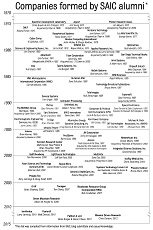Drone Aircraft Revisited, Interview, and Balboa Park Excursion
Closed Published by Dr. Beyster January 30th, 2012 in Government, San Diego, Technology.I thought I was done talking about drone aircraft for a while, until I read a recent article in the Los Angeles Times. According to the article, the U.S. Navy is testing a new drone that will be able to take off, complete a mission, and land autonomously, that is, without any human pilot whatsoever.
If this report is true, then the Navy’s Northrop Grumman X-47B represents quite a technological step forward from the current crop of drones, which rely on ground-based pilots to fly them. It also introduces a new element into the military chain of command. Just who is accountable if this deadly robotic weapon with a computer mind of its own kills someone, friend or foe, whether by intention or by mistake?
Remotely piloted drone aircraft are now routinely employed against al-Qaeda terrorists in Afghanistan and other countries, and President Obama’s proposed defense budget suggests an even greater reliance on them in the future. I personally support the increased development and deployment of drone aircraft, though I am concerned that fully autonomous weapons introduce new political and moral issues that we as a nation will need to address before these weapons are introduced to the battlefield.
* * *
In a related article, I was interested to read that cutbacks in the defense budget may lead the Pentagon to shelve the high-tech Northrop Grumman RQ-4 Global Hawk drone aircraft for the foreseeable future. The price for each Global Hawk drone is $176 million. Deputy Secretary of Defense Ashton Carter went on record last week, saying that the RQ-4 drone has “…priced itself out of the niche, in terms of taking pictures in the air. That’s a disappointment for us, but that’s the fate of things that become too expensive in a resource-constrained environment.”
The result is that the military will likely keep the Air Force’s fleet of 33 Lockheed U-2 spy planes flying through at least the next decade or longer. I wouldn’t be surprised to see other innovative new (and expensive) weapons systems shelved in favor of existing technology.
* * *
I was recently interviewed for an article that appeared in the January 23, 2012 issue of the San Diego Business Journal. In the article I discuss some of the things that made SAIC uniquely successful, including attracting and recruiting high-caliber talent by offering opportunities to become owners of the company.
* * *
Last Wednesday we made a field trip to Balboa Park here in San Diego. We visited museums and had a nice lunch at The Prado. I hope to go back soon to visit the Air and Space Museum. On Friday we went out on the boat and had lunch at Sally’s restaurant at the Manchester Hyatt on San Diego Bay. They have their own dock, which made our visit very pleasant.
– Bob




